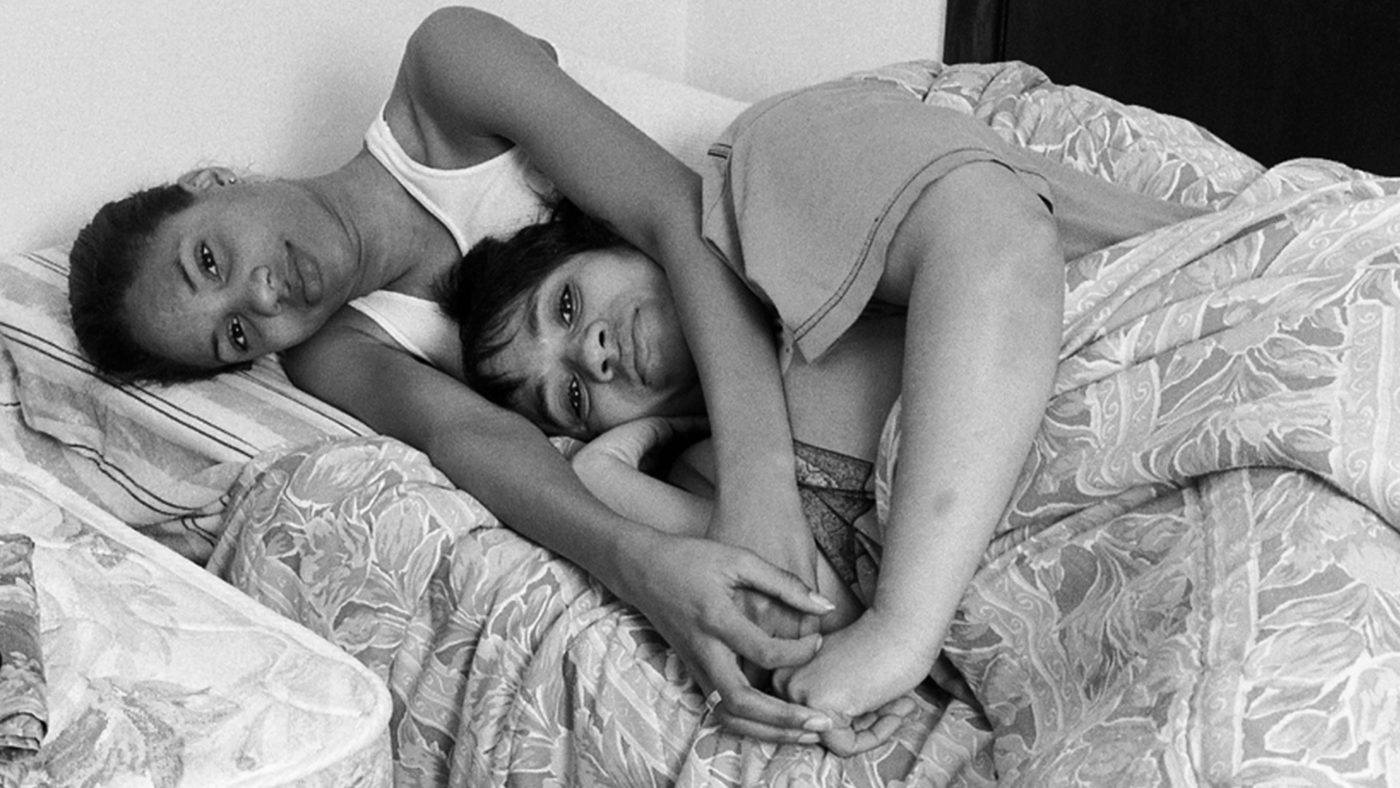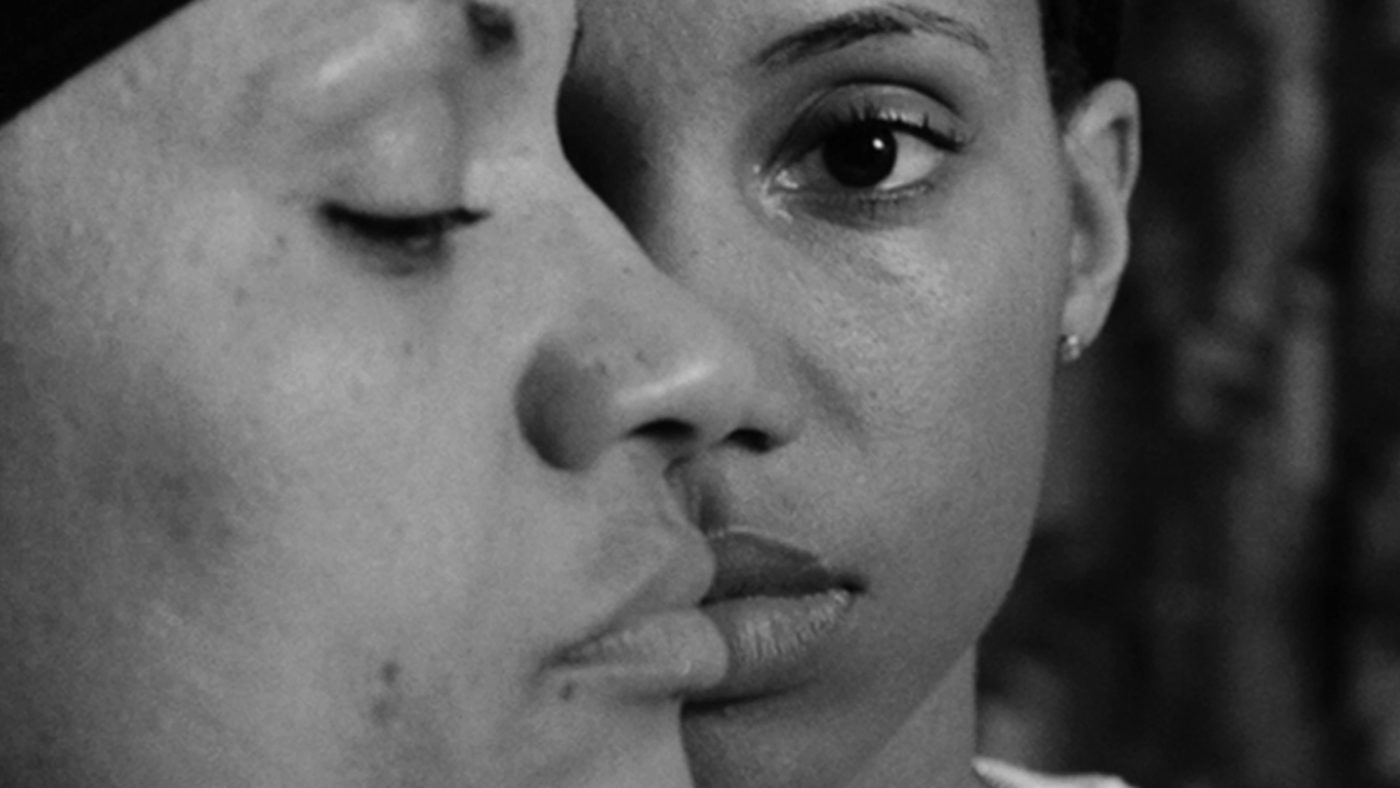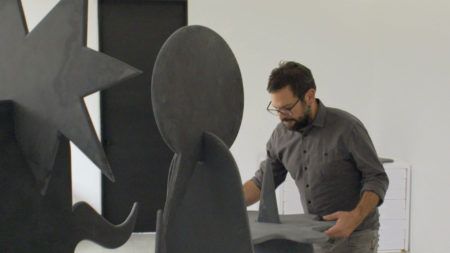Interview
Intergenerational

LaToya Ruby Frazier. Image of Frazier and her mother. Production still from the New York Close Up, LaToya Ruby Frazier Makes Moving Pictures. © Art21, Inc. 2012.
LaToya Ruby Frazier describes the external factors at play in her work and the rapidly changing socio-economic landscape of her hometown of Braddock, Pennsylvania.
Art21—Was art a part of your childhood?
Frazier—Art has been in my life from the beginning. I started drawing and painting and thinking about art when I was about six years old, in kindergarten. The school district that I attended was very big on the arts. The arts were almost equal in importance to the football team. The art department had its own section [of the high school]. Students were in a lot of art competitions in Pittsburgh.
What is your relationship to Pittsburgh?
I was born and raised in Braddock, Pennsylvania. One side of my family has been there since the 1700s; the other side migrated there in the 1800s. My family has witnessed and lived in drastically different socioeconomic climates in Braddock.
My grandmother grew up there when it was prosperous, in the 1930s. My mother grew up there in the ’50s, when the steel plants started to close, and she was around during segregation and the White flight to the suburbs. I grew up there in the ’80s, when the government unleashed crack into our community to finish us off. Through the twentieth century and into the twenty-first, we’ve internalized the history of what American capitalism can do to people. So, I started making work there. For the past ten years, I’ve been making photographs there. I began with analyzing and dealing with the domestic, interior spaces of our family within the home and how the outside socioeconomic factors dictate the roles of family members and how we relate to each other.
My mother became an active participant; she became an artist herself. Her voice and her images are incorporated in the work. We started making videos together. My grandmother was always a collaborator as well, making images. The works are self-portraits. But I view the three of us as one entity that exists in the vortex of Braddock’s history.

Production still from the New York Close Up episode, LaToya Ruby Frazier Takes on Levi’s. © Art21, Inc. 2011.
How singular is Braddock?
In making the work about Braddock, I’m talking about the parts of American history and the impact of the industrial revolution—the part that people won’t tell. People are always proud of America being the creator of steel, but they don’t highlight the flipside of it or what happened once those steel mills left the country and closed. I see Braddock in line with what happened in Detroit, in particular, and in Cleveland, and also globally. When industries close, the infrastructure that’s left behind becomes toxic and hazardous. It’s never removed or cleaned up. The industries let it fall apart.
How do interiors and private spaces relate to this?
It’s my belief that one should not separate the public and the private because what happens in the private home, in the domestic sphere, is affected by things that are going on in the community, things that are connected to economic status and to a place that’s vibrant and flourishing. I noticed the psychological differences in the way that my mother and my grandmother and I viewed ourselves as women from this community: the way that we look at ourselves, the way that we have a familial gaze with one another or an intergenerational psyche connection based on coming from this specific place.
Through my work, I talk about my experience being a postmodern subject from a post-industrial place that is still in the process of becoming de-industrialized. It’s about being this de-centered self, coming from this distinctive historic American period of the steel industry. The connection of the outside world to the family portraits demonstrates that one’s environment has an impact on the body: it shapes the body, it shapes the way you stand, it shapes the way that you think and how you present yourself to the public.
Do you still spend a lot of time in Braddock?
Yeah, I’m there every other week, continuing the documentary work that I’ve been doing for the past ten years. Each time I go back, there are significant changes. I’m very concerned about how we, the residents, and the history of our community are being erased. Sometimes I have anxiety because the gentrification is happening so aggressively and rapidly that I feel like there’s not enough time to catch it.
I’m committed to making my work in Braddock. Even though my gallery and I are in New York, it is important for me to make the public understand that my work is made in a specific geographic location.
For the past three years, I’ve been the curator at Rutgers University, at the Mason Gross School of Art, where I’ve curated a number of shows. So, I’ve worked with a lot of artists, both national and international, and have taken on some pretty intense installations, like the ones for Simone Leigh and Chitra Ganesh. I also teach in the photography department. I’ll teach whatever they need, from intro classes to black-and-white, to color, to digital photography. So, I go back and forth about ten to twelve times a week, and all my money goes to New Jersey Transit, unfortunately.
In addition, I’m a working artist. Whenever I’m not teaching and not curating, I’m usually at a residency program. I’m currently in the Whitney Independent Study Program. I prefer to be in a program so I can stay connected to other artists and be a part of that community because, coming from Pittsburgh, it was really hard to understand how to maneuver in New York City’s art scene. But now that I’ve been here for three years, I’ve been able to build respect from my peers and develop collaborations and ideas.
Your schedule seems pretty busy.
I don’t get much sleep. On average, I might get three to five hours of sleep. I’m usually up by 7:30 am. By the time I get through my whole schedule, I might get home about 2:00 am, try to do a couple of things for myself, and go to sleep so I can get back up at 7:30 and do it all over again. I don’t get the weekends off, either. When you’re an artist, it’s a 24/7 job.
Interview by Nick Ravich aboard New Jersey Transit on December 8, 2010, and by Wesley Miller at The 1896 Studio in Brooklyn, New York, on March 7, 2011.
This interview was originally published in the Art21 publication, Being an Artist.
Editor: Tina Kukielski. Curatorial and Editorial Assistant: Danielle Brock. Copy Editor: Deanna Lee. Published: September 2018. © Art21, Inc.




